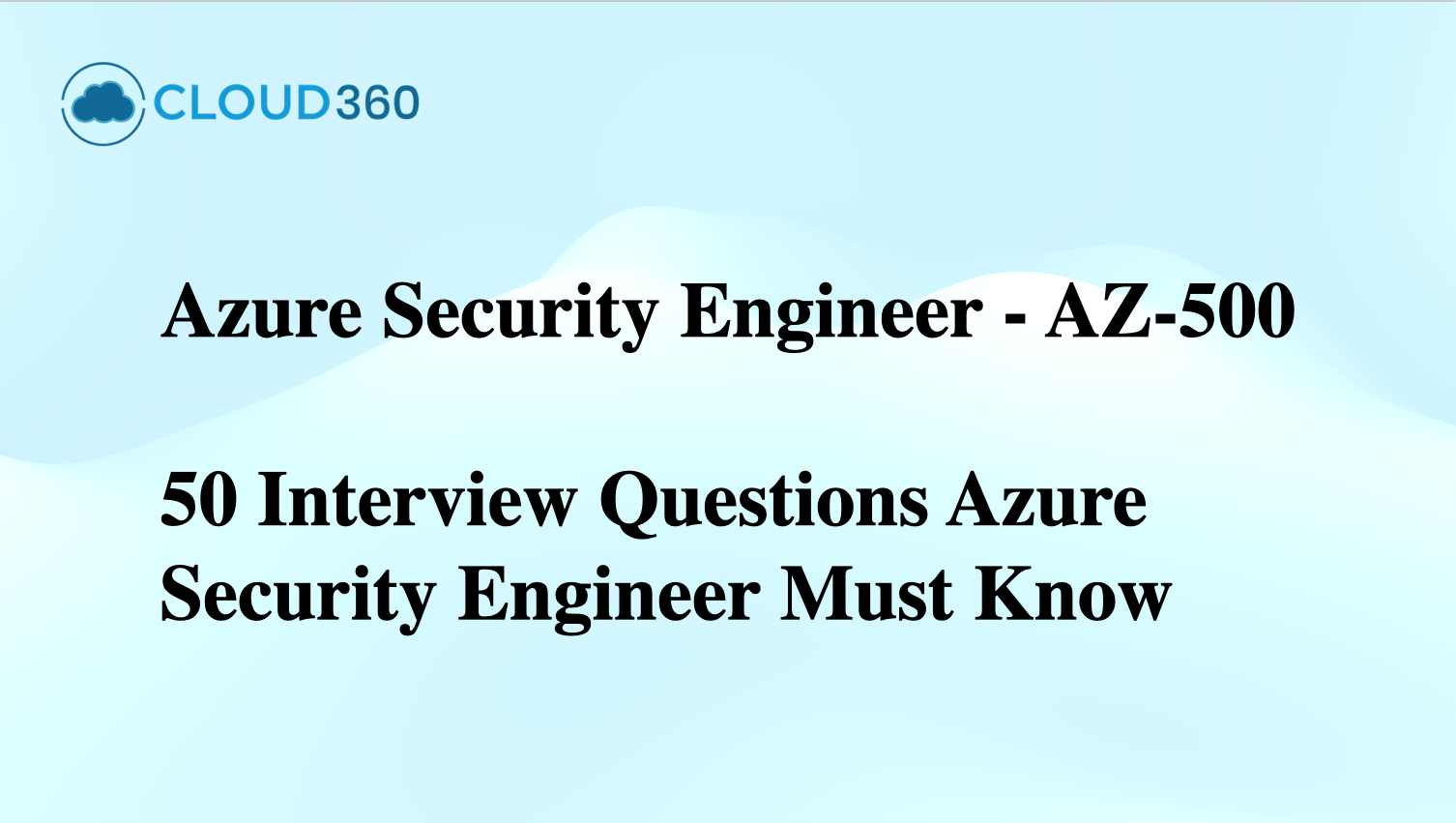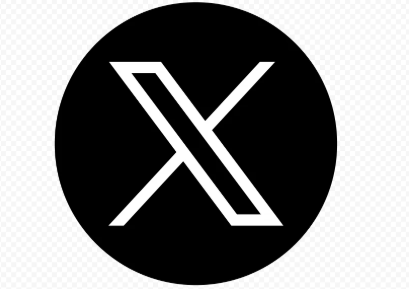Image Credit: Cloud360 Training
If you're preparing for the Microsoft AZ-500 exam or gearing up for an interview for a Cloud Security Engineer or Azure Security Engineer role, you need to be well-versed in a wide range of Azure security topics — from identity and access management to securing resources and managing security operations.
In this blog, we've compiled the top 50 AZ-500 interview questions, complete with answers and explanations to help you ace both your exam and technical interviews.
Categories Covered
Azure AZ-500 Interview Questions and Answers
1. What is Microsoft Defender for Cloud?
Answer: Microsoft Defender for Cloud is a cloud-native application protection platform (CNAPP) that helps secure Azure, hybrid, and multi-cloud environments.
Explanation: It provides threat protection, security posture management, and regulatory compliance recommendations.
2. What are Azure Security Center tiers?
Answer: Free Tier and Standard Tier (now part of Defender for Cloud).
Explanation: Free Tier offers basic security hygiene, while the Standard Tier includes advanced threat protection for workloads.
3. What is Conditional Access in Azure AD?
Answer: It's a policy engine that evaluates conditions and enforces controls to allow or block access.
Explanation: Conditional Access allows you to enforce MFA, block access from risky locations, and enforce session controls.
4. What is the difference between RBAC and ABAC in Azure?
Answer: RBAC is Role-Based Access Control; ABAC is Attribute-Based Access Control.
Explanation: RBAC assigns roles based on scope, while ABAC adds condition-based access using resource and user attributes.
5. How does Azure Key Vault enhance security?
Answer: It stores and manages secrets, encryption keys, and certificates securely.
Explanation: It reduces the risk of credentials being exposed in code and supports managed identities.
Identity and Access Management (IAM)
6. What are the different types of roles in Azure RBAC?
-
Owner
-
Contributor
-
Reader
-
Custom roles
7. What is Privileged Identity Management (PIM)?
Answer: PIM allows just-in-time access to Azure resources for privileged accounts.
Explanation: It helps enforce least privilege and audit privileged operations.
8. What is a service principal in Azure AD?
Answer: A service principal is an identity created for apps or services to access Azure resources.
9. What is MFA and how is it implemented in Azure?
Answer: MFA (Multi-Factor Authentication) adds a second layer of security.
Explanation: Azure AD MFA can be enforced using Conditional Access policies.
10. How can you assign permissions in Azure AD?
Answer: Through role assignments using built-in or custom roles at the subscription/resource group/resource level.
Platform Protection
11. What is Network Security Group (NSG)?
Answer: NSG is used to filter inbound/outbound traffic to Azure resources.
12. Difference between NSG and Azure Firewall?
Answer: NSG filters traffic at the network interface/subnet level, while Azure Firewall provides centralized network protection with logging and FQDN filtering.
13. What are Azure DDoS Protection types?
Answer: Basic (default) and Standard.
Explanation: Standard provides enhanced mitigation and telemetry for large-scale attacks.
14. What is Just-In-Time VM access?
Answer: It restricts access to VMs by allowing connections only when needed for a limited time.
15. What is the purpose of Application Security Groups (ASGs)?
Answer: ASGs simplify NSG management by grouping VMs logically, enabling policy application by group.
Security Operations
16. What is Microsoft Sentinel?
Answer: Microsoft Sentinel is a cloud-native SIEM and SOAR platform.
17. What are workbooks in Microsoft Sentinel?
Answer: Workbooks visualize security data using dashboards and graphs.
18. What is a playbook in Microsoft Sentinel?
Answer: It's an automated workflow based on Azure Logic Apps that responds to incidents or alerts.
19. How do you onboard data sources to Microsoft Sentinel?
Answer: By connecting built-in connectors like Azure AD, Office 365, and custom data sources.
20. What is a Kusto Query Language (KQL)?
Answer: KQL is used in Azure Monitor and Sentinel for querying logs.
Data and Application Security
21. What is Transparent Data Encryption (TDE)?
Answer: TDE encrypts SQL database files to protect data at rest.
22. What is Azure Disk Encryption (ADE)?
Answer: ADE encrypts OS and data disks using BitLocker or DM-Crypt.
23. How does Azure Information Protection (AIP) work?
Answer: AIP classifies and labels documents and emails for protection.
24. What is Azure Defender for Key Vault?
Answer: It monitors and alerts suspicious access patterns to Key Vault.
25. What are the options to encrypt data in Azure?
Miscellaneous / Scenario-Based
26. How do you secure a storage account in Azure?
Answer: Use private endpoints, access keys rotation, and Azure AD authentication.
27. What is Azure Blueprints?
Answer: It helps define and enforce governance across environments using templates.
28. How do you protect secrets in CI/CD pipelines?
Answer: Store secrets in Azure Key Vault and integrate with DevOps securely.
29. What’s the difference between Azure Policy and RBAC?
Answer: RBAC controls who can do what, while Policy defines what can be done.
30. What is Customer Lockbox?
Answer: It ensures that Microsoft support engineers cannot access your data without explicit approval.
Advanced-Level Questions
31. How can you detect brute-force attacks in Azure?
Answer: Use Microsoft Sentinel to detect patterns from Azure AD sign-in logs.
32. How do you secure APIs in Azure?
Answer: Use Azure API Management with OAuth 2.0, rate limiting, and WAF.
33. What is managed identity in Azure?
Answer: It provides an automatically managed identity to authenticate with services.
34. What’s the difference between system-assigned and user-assigned managed identities?
Answer:
35. How do you implement security baselines in Azure?
Answer: Use Microsoft Defender for Cloud and Azure Policy initiatives.
36. What is an NSG Flow Log?
Answer: It logs traffic allowed or denied by NSG rules for network analysis.
37. What are security recommendations in Defender for Cloud?
Answer: Suggestions based on Azure best practices to improve your security posture.
38. What is the Secure Score in Azure?
Answer: A metric in Microsoft Defender for Cloud that reflects your security posture.
39. How can you monitor identity risks in Azure AD?
Answer: Use Azure AD Identity Protection to detect leaked credentials, sign-in anomalies, and risky users.
40. What are break-glass accounts?
Answer: Emergency admin accounts that bypass MFA and Conditional Access policies.
Practical Questions
41. How do you enforce encryption for blobs in Azure?
Answer: Use storage account settings or customer-managed keys with Key Vault.
42. How do you prevent data exfiltration from Azure?
Answer: Use network controls like NSG, Private Endpoints, and disable public access.
43. What tools can you use to audit access in Azure?
Answer: Azure AD Sign-in logs, activity logs, and diagnostic settings.
44. What’s the best way to log access to sensitive data in Azure?
Answer: Enable diagnostic logs and forward to Microsoft Sentinel or Log Analytics.
45. How do you manage security in a multi-subscription Azure environment?
Answer: Use Management Groups, Azure Policy, and role delegation with RBAC.
Interview Behavior & Soft Skills
46. How do you handle a security incident in Azure?
Answer: Identify → Contain → Investigate → Remediate → Learn
47. How do you keep up with Azure security best practices?
Answer: Microsoft Learn, Tech Community, Azure Updates, and certifications.
48. How do you ensure compliance in Azure environments?
Answer: Use Defender for Cloud, Compliance Manager, Azure Blueprints, and Policy.
49. How do you ensure least privilege in Azure?
Answer: Use RBAC with minimum required permissions, PIM for elevation.
50. What is Zero Trust and how does Azure support it?
Answer: Zero Trust is a security model where nothing is trusted by default. Azure supports it through MFA, Conditional Access, Identity Protection, and network segmentation.
Final Tips
-
Review all Microsoft Learn AZ-500 modules
-
Practice in the Azure Portal
-
Use KQL queries and Microsoft Sentinel labs
-
Try practice tests and real-world case studies
The AZ-500: Microsoft Azure Security Technologies exam is not just about passing a test — it's about proving your expertise in securing cloud environments at scale. Whether you're preparing for the certification or interviewing for an Azure Security Engineer role, mastering these interview questions and explanations will give you the confidence and clarity to tackle real-world challenges.
Remember, Azure security is an ever-evolving field. Stay updated with Microsoft Learn, explore hands-on labs, and keep refining your knowledge with practical experience in the Azure portal. With the right preparation and mindset, you're well on your way to becoming a trusted cloud security professional.


